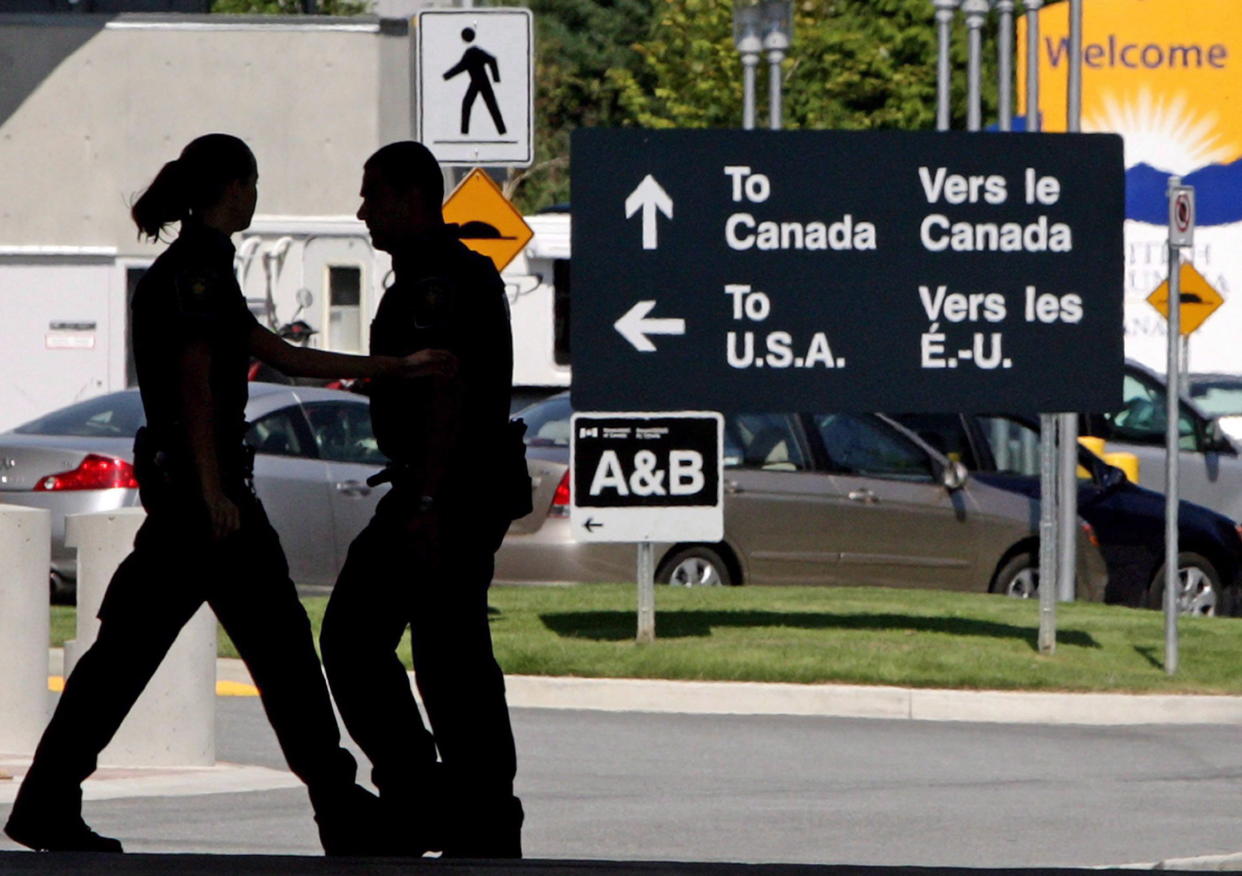How the Safe Third Country Agreement may lead to more irregular border crossings

As advocates call for an end to the Canada-U.S. Safe Third Country Agreement due to the limitations it places on refugee claimants, one immigration lawyer says the agreement might actually be backfiring for Canada.
The treaty, effective since 2004, was designed to stem the flow of refugee claims processed at the Canada-U.S. border by requiring refugees in either country to apply for refugee status in the first country in which they land.
So, if a person not from Canada or the U.S. lands in the U.S., they must apply for refugee status there, rather than in Canada. If their application is denied, the claimant can not then submit an application in Canada at a regular border crossing.
The same goes for people who land in Canada first.
However, since the flow of people making refugee claims is heavier coming to Canada from the U.S. than vice versa, immigration lawyer Joel Sandaluk said it’s always had a greater impact on Canada.
“The real purpose of the safe third country agreement I think was essentially to limit the number of eligible claimants to Canada,” Sandaluk said. “I think that under normal circumstances, the agreement operates in a way that is very much favorable to the Canadian government.”
That was, until the flow people crossing irregularly into Canada jumped in 2017. Between January 2017 and March 2018, the RCMP intercepted 25, 645 people crossing irregularly into Canada. Ninety-one per cent were intercepted in Quebec.
Sandaluk attributes the phenomenon, in part, to a combination of increasingly exclusive refugee system in the U.S., and the nature of the First Safe Country Agreement.
This is because of a loophole in the treaty: It only applies to a person who submits a refugee claim in the U.S. and then attempts to make a claim at a regular Canada-U.S. border crossing. It does not apply to those who cross Canada’s long, porous border illegally.
“If [refugee claimants] enter Canada irregularly, then that has a way of circumventing the restriction on being eligible to claim refugee status,” Sandaluk explained.
“If you present yourself to an officer at a border crossing, you won’t be eligible. If you walk, say, 100 metres to the left and cross in farmer’s field or on the railway tracks, and come around from the other side and see an immigration officer already inside Canada, you are eligible.”
As the U.S. government rules out criteria for refugee status that Canada considers acceptable — for example, fear of persecution due to domestic violence or being a member of the LGBTQ community — the range and number of people making claims in Canada grows.
“The thing about the agreement is that when it forces people to enter Canada irregularly, it causes a great deal of chaos,” Sandaluk said.
And that chaos is something Canadians have become familiar with in recent years.
With Quebec — the province hardest hit by the increase in asylum seekers from the U.S. — bracing for a fresh influx of summer border crossings, the federal government announced in February plans to allocate $173.2 million to help border officials.
In May, the government announced it would move border and customs agents from the Greater Toronto Area to Quebec over the summer months, prompting fears of travel delays in and around Toronto.
Demands for reform
As border agents grapple with growing numbers of people crossing irregularly into Canada, which Sandaluk partly attributes to the Canada-U.S. agreement, politicians and advocates call for changes to the agreement for a different reason.
When the agreement was first proposed, Sandaluk said, the Canadian government argued that since Canada and the U.S. both followed the U.N.’s 1951 Refugee Convention, their refugee systems were compatible enough for such an agreement.
Where the two countries differ, though, is in how they define some of the criteria for refugee status, and as that criteria becomes more restrictive in the U.S., it does so in Canada for potential refugees impacted by the Safe Third Country Agreement.
“There’s a lot of people who might not be able to obtain protection in the U.S. who might then be prevented from accessing the refugee determination system in Canada by the Safe Third Country Agreement,” Sandaluk said.
“Outsourcing this kind of determination to a different country, and especially a country that has a very different process, has really felt wrong, I think, to a lot of Canadians.”
New Democrat MPs Don Davies and Jenny Kwan are among the Canadian politicians who have called on Prime Minister Justin Trudeau to suspend the agreement, with Kwan challenging Trudeau to “show moral leadership” by doing so during question period earlier in June.
Trump’s US is separating children from their parents as punishment for seeking refugee status & refusing to acknowledge those fleeing domestic & gang violence as refugees. UN calls this cruel & unusual. NDP asks Trudeau to now admit the US is not a safe 3rd country – he refuses.
— Don Davies MP (@DonDavies) June 18, 2018
At the time, Trudeau said he wouldn’t “play politics” with the U.S. over its refugee and border policies.
Since then, though, he has condemned the Trump administration’s hard line on asylum seekers, and Immigration Minister Ahmed Hussen has said Canada will “continue to monitor” changes to the U.S. asylum system.
Despite opposition to the agreement, Sandaluk said it’s unlikely the government will consider suspending it at this point.
While opposition to the agreement has existed since it was first enacted, he said the fact that it has generally benefitted the government will likely continue to protect it.
“The truth is, the only thing I can imagine making the government change the safe third country agreement or opt out of it,” Sandaluk said, “is if the flow of irregular arrivals has put such a strain in the system that the government decides it’s really not worth it.”

